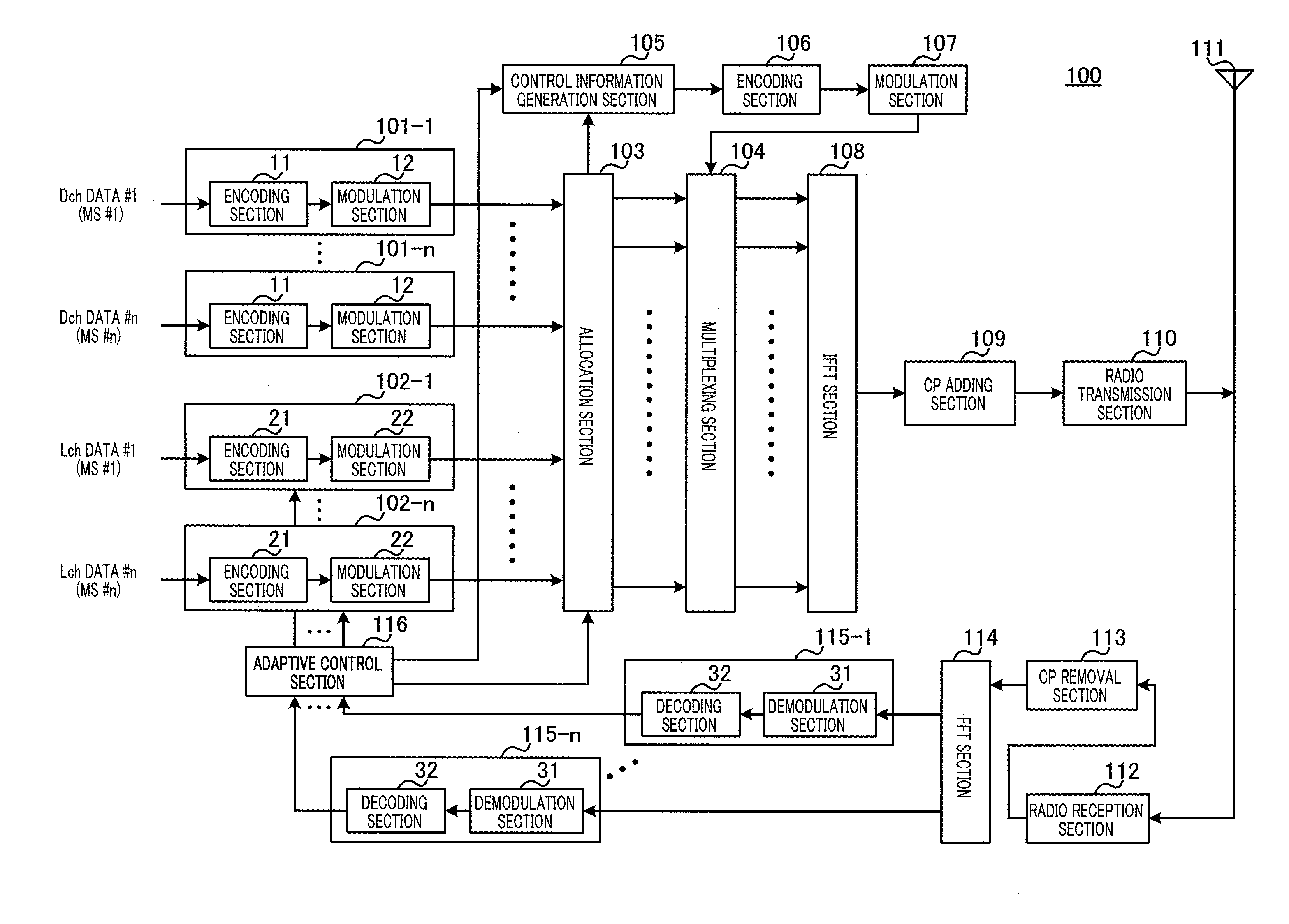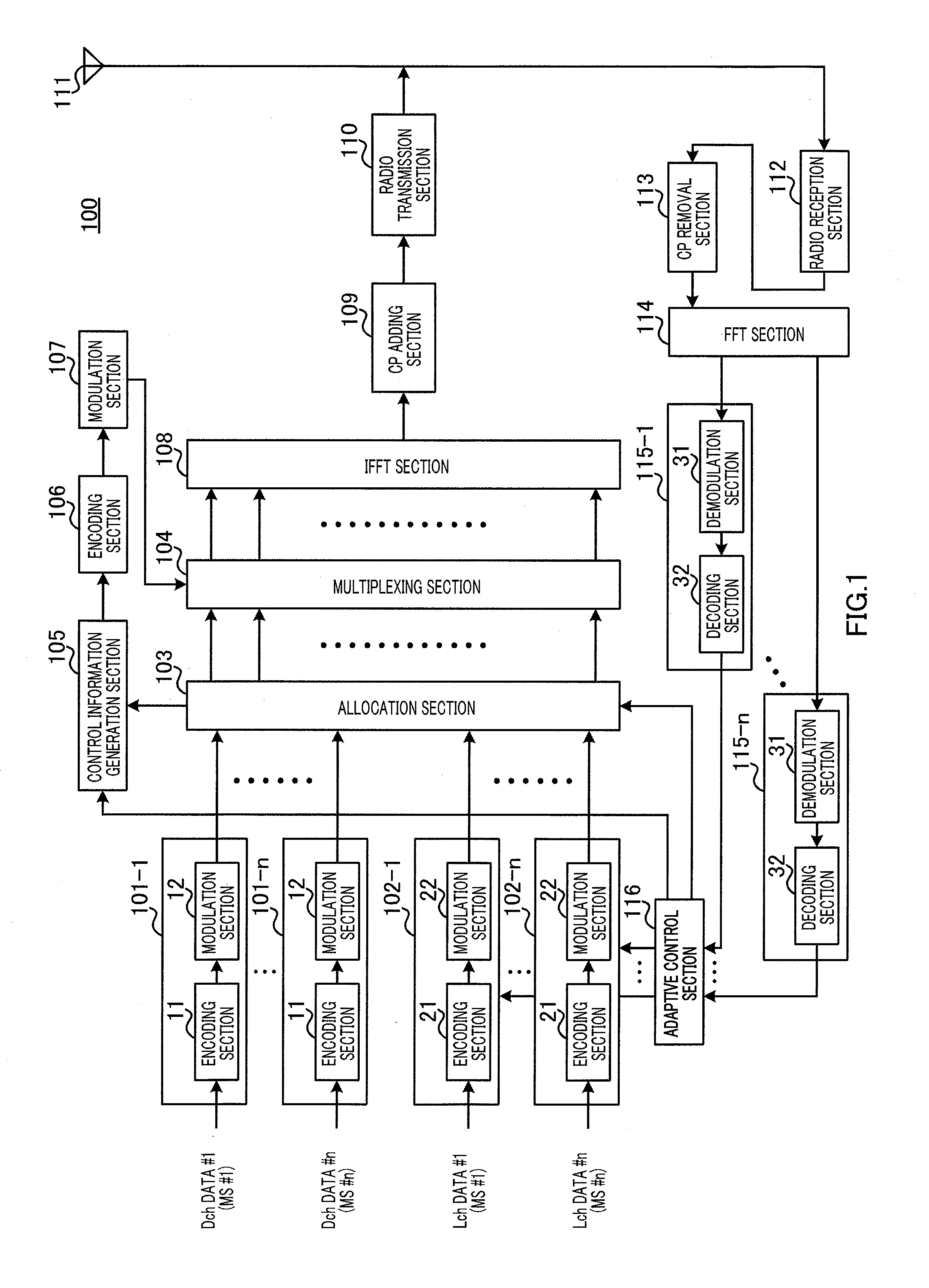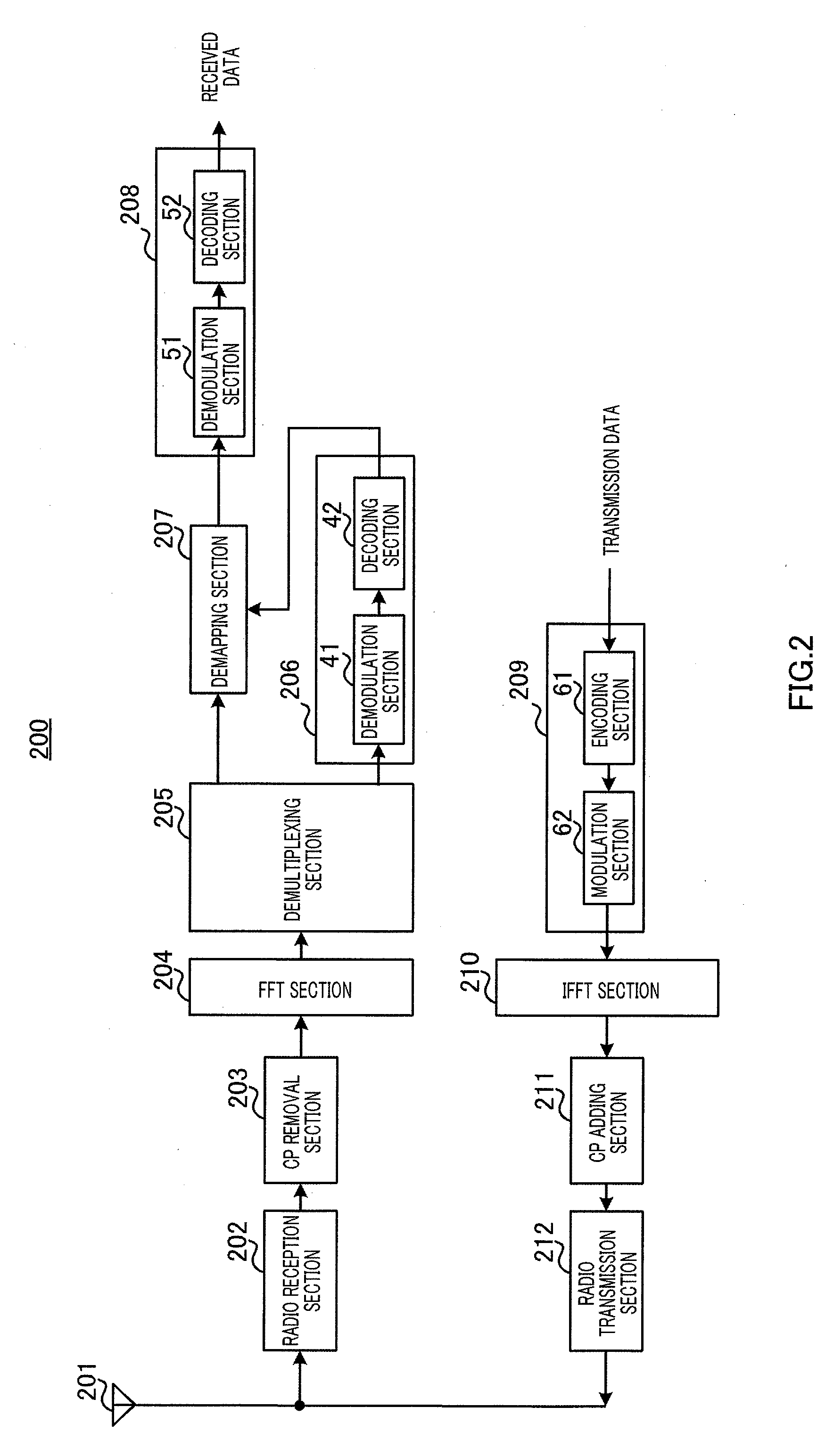Channel arrangement method and radio communication base station device
- Summary
- Abstract
- Description
- Claims
- Application Information
AI Technical Summary
Benefits of technology
Problems solved by technology
Method used
Image
Examples
embodiment 1
[0044]The configuration of base station 100 according to this embodiment is shown in FIG. 1. Base station 100 divides a plurality of subcarriers comprised of an OFDM symbol that is a multicarrier signal into a plurality of RBs, and uses a Dch and Lch on an RB-by-RB basis in that plurality of RBs. Also, either a Dch or an Lch is allocated to one mobile station in the same subframe.
[0045]Base station 100 is equipped with n encoding and modulation sections 101-1 through 101-n each comprising encoding section 11 and modulation section 12 for Dch data, n encoding and modulation sections 102-1 through 102-n each comprising encoding section 21 and modulation section 22 for Lch data, and n demodulation and decoding sections 115-1 through 115-n each comprising demodulation section 31 and decoding section 32, where n is a number of mobile stations (MSs) with which base station 100 can communicate.
[0046]In encoding and modulation sections 101-1 through 101-n, encoding section 11 performs turbo...
embodiment 2
[0143]In this embodiment a case will be described in which switching between use of Arrangement Method 1 and Arrangement Method 2 of Embodiment 1 is performed according to the communication environment.
[0144]As described above, Arrangement Method 1 enables more RBs consecutive in the frequency domain that can be used for Lch's to be secured than Arrangement Method 2, while Arrangement Method 2 has a greater frequency diversity effect than Arrangement Method 1.
[0145]Specifically, when four consecutive Dch's, Dch #1 through #4, are used for a Dch data symbol of one mobile station, with Arrangement Method 1 (FIG. 5) four RBs consecutive in the frequency domain, RB #3 through #6 and RB #9 through #12, can be used for an Lch, while a Dch data symbol is allocated to two RBs consecutive in the frequency domain, RB #1, #2 and RB #7, #8. On the other hand, with Arrangement Method 2 (FIG. 9) only two RBs consecutive in the frequency domain, RB #2, #3, RB #5, #6, RB #8, #9, and RB #11, #12, ca...
embodiment 3
[0181]In this embodiment a case will be described in which only one Dch is arranged in one RB (the number of subblock divisions per RB is one).
[0182]First, a relational expression for a Dch channel number and the RB number of an RB in which that Dch is arranged will be shown.
[0183]RB number j of an RB in which a Dch with channel number k is arranged is given by Equation (3) below.
[3]
j=q(k) (Equation 3)
[0184]where k=1, 2, . . . , Nrb, and q(k) is given by an M-row×(Nrb / M)-column block interleaver where M is an arbitrary positive integer.
[0185]If it is assumed here that Nrb=12 and M=4, q(k) is given by the 4-row×3-column block interleaver shown in FIG. 21. That is to say, as shown in FIG. 21, q(k)=1, 7, 4, 10, 2, 8, 5, 11, 3, 9, 6, 12 is obtained for k=1, 2, 3, 4, 5, 6, 7, 8, 9, 10, 11, 12. Thus, Dch #(k) is distributively arranged in RB #(q(k)).
[0186]Specifically, as shown in FIG. 22, Dch #1 is arranged in RB #1, Dch #5 is arranged in RB #2, Dch #9 is arranged in RB #3, Dch #3 is ar...
PUM
 Login to View More
Login to View More Abstract
Description
Claims
Application Information
 Login to View More
Login to View More - R&D
- Intellectual Property
- Life Sciences
- Materials
- Tech Scout
- Unparalleled Data Quality
- Higher Quality Content
- 60% Fewer Hallucinations
Browse by: Latest US Patents, China's latest patents, Technical Efficacy Thesaurus, Application Domain, Technology Topic, Popular Technical Reports.
© 2025 PatSnap. All rights reserved.Legal|Privacy policy|Modern Slavery Act Transparency Statement|Sitemap|About US| Contact US: help@patsnap.com



